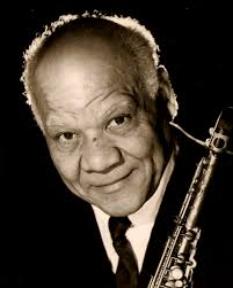
Editor, Webmaster: Phil Cartwright Editor@earlyjas.org
|
"I have never forgotten the power and imagination with which he played," Duke said
of the experience. [Chilton, 56] In 1962, Ellington expanded upon this:
"I consider Bechet the foundation. His things were all soul, all from the inside. It was very,
very difficult to find anyone who could really keep up with him." [Stanley Dance, 10]
Then, on July 30, 1923, Bechet made his recording debut with the Clarence Williams Blue
5: an ensemble that was largely assembled to showcase Bechet’s talents. Over the next two
years, some of his most important recordings would be made.
Here are some highlights from these sessions:
"Wild Cat Blues" has pride of place, as it was Bechet’s first recording and the first great
jazz saxophone on record.
"Kansas City Man Blues" shows a fully formed blues soloist: we don't need to hear him
grow into the music or go through and apprenticeship phase.
"Achin' Heart Blues" documents a clarinet soloist more advanced than either Johnny
Dodds or Leon Roppolo.
"Shreveport Blues" is not only a demonstration of Bechet's mastery of lyric playing, but his
double time figurations as well.
His lightening runs behind the melody in "Old Fashioned Love" are all musically substantial
and emotionally relevant -- in this way he stands out in contrast to other flashy players of
his era.
On "House Rent Blues" he builds perfectly balanced solo through interconnected triplet
breaks. On "Mean Blues" he shows his lyrical ability to create a counter melody more
interesting than the original. I can't stress enough how superior he seems to compared to
everyone else out there at the time these were made. The listener remains glued to his lines
no matter who is playing the lead at the time. Perfect variation after variation unfolds until
the end.
"Texas Moaner Blues" features his first work with a young Louis Armstrong, this time on
clarinet and soprano sax. His solo concept is clearly far in advance of Armstrong at this
point, and Satch seems to have learned a lot, when we check out later recordings.
On "Mandy Make Up Your Mind" we get a little soprano sax work comping, but the big
solo is taken by Bechet on sarrusophone! And it sounds great!
Shortly after this era, Bechet returned to Europe and wasn't documented again on
American records for several years of the important roarin' '20s, which fixed the canon in
many jazz fans' minds. We can be grateful that Clarence Williams took the opportunity to
showcase his talents between 1923-1925, or history might have lost perspective on the
man Ellington considered the foundation and epitome of jazz itself.
Chilton, John. Sidney Bechet: The Wizard of Jazz. OUP, 1987
Dance, Stanley. The World of Duke Ellington. Da Capo Press, 1970.
| Earlville Association for Ragtime Lovers Yearning for Jazz Advancement and Socialization |
EARLYJAS
Sidney Bechet with Clarence Williams Blue Five
Call it an accident of history, but had Sidney
Bechet not been deported from England in
1922, we might legitimately wonder whether
his influence on a young Duke Ellington or
Louis Armstrong would ever have taken
place. Shortly after his deportation, he was
hired by pianist and composer Donald
Heywood as part of a traveling show called
How Come. While on tour, the young Duke
Ellington heard him in Washington D.C., an
experience that Duke recalled for the rest of
his life.
Bechet not been deported from England in
1922, we might legitimately wonder whether
his influence on a young Duke Ellington or
Louis Armstrong would ever have taken
place. Shortly after his deportation, he was
hired by pianist and composer Donald
Heywood as part of a traveling show called
How Come. While on tour, the young Duke
Ellington heard him in Washington D.C., an
experience that Duke recalled for the rest of
his life.
